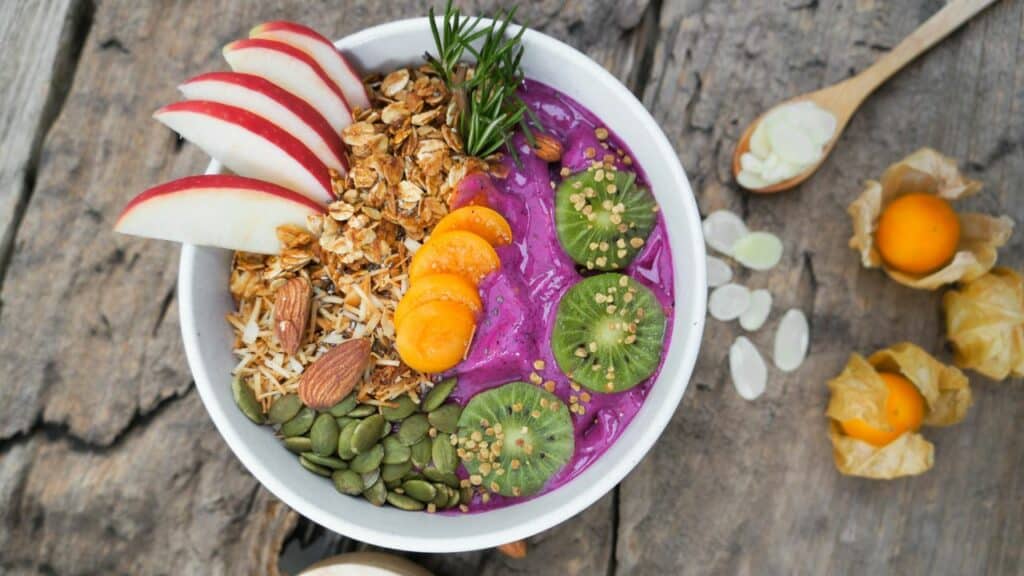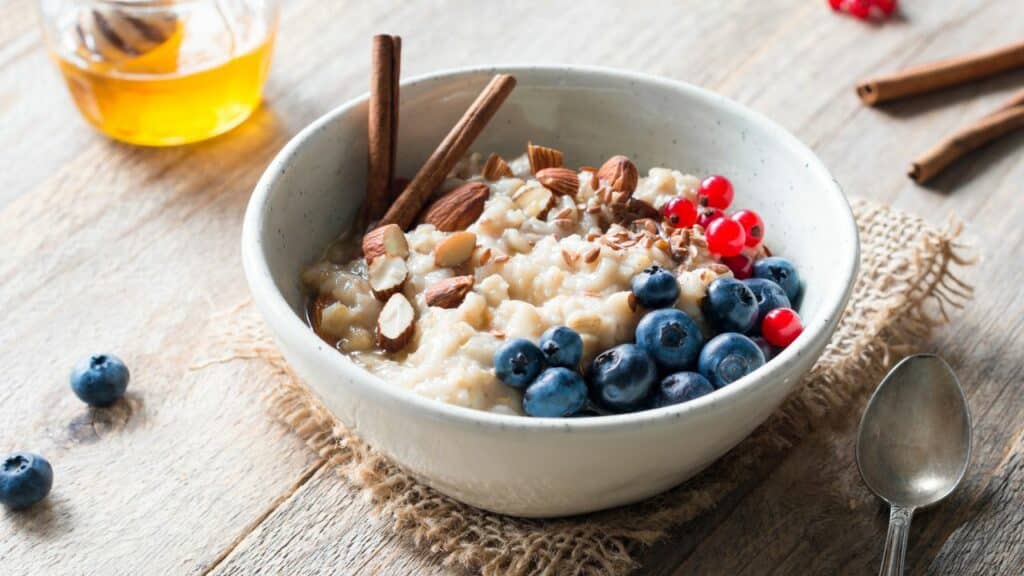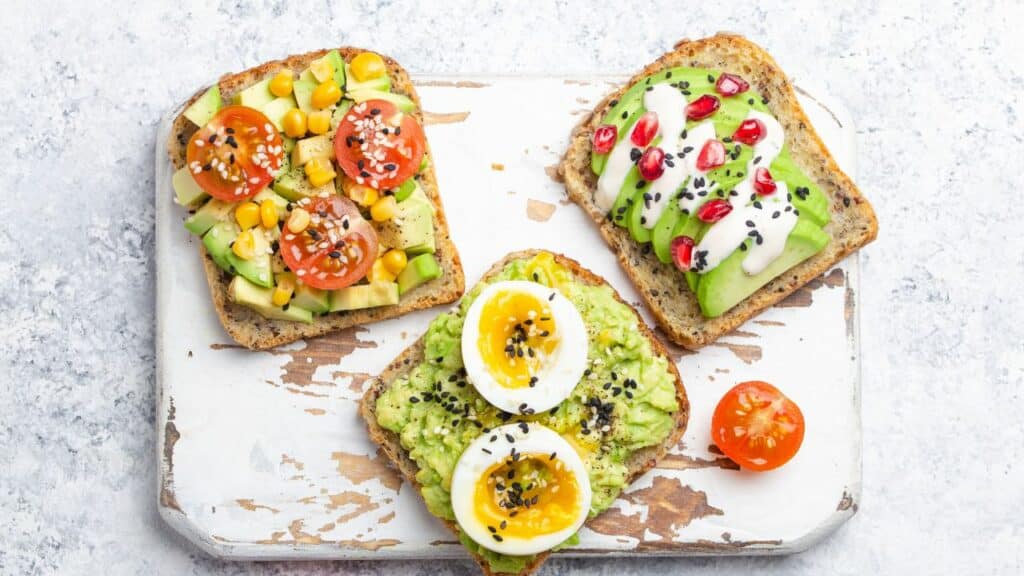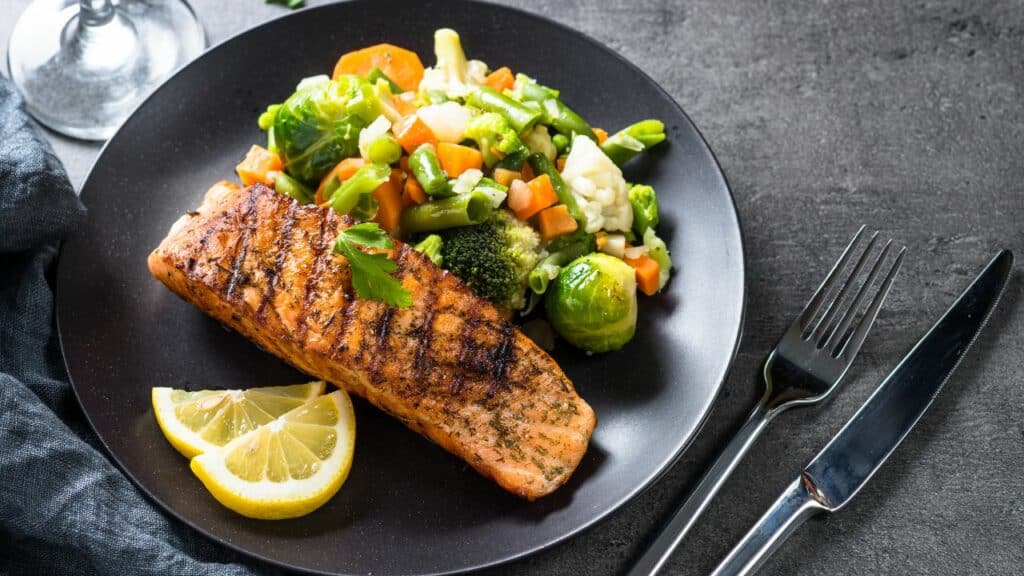Eating nutritious food is a cornerstone of maintaining good health, but it can be particularly challenging for individuals who have no teeth.
Whether you are an individual with no teeth or significant dental issues, an elderly person, a denture wearer, or a caregiver looking after someone with specific dietary needs, finding the right foods that are both delicious and easy to eat is crucial.
Fortunately, plenty of delicious options are available that are easy to consume and packed with essential nutrients. In this blog post, we will explore 11 nutritious foods for people with no teeth, ensuring they can enjoy their meals without compromising on taste or nutrition.
Table of Contents
- 11 Soft and Easy To Eat Foods For People with No Teeth
- Tips for Preparing Nutritious Meals for People with No Teeth
- Frequently Asked Questions
- 1. What are the best sources of protein for people with no teeth?
- 2. How can I make vegetables easier to eat for someone with no teeth?
- 3. Are there any foods to avoid for people with no teeth?
- 4. How can I ensure that meals remain interesting and varied?
- 5. Can I include meats in the diet for someone with no teeth?
- Conclusion
11 Soft and Easy To Eat Foods For People with No Teeth
1. Smoothies and Smoothie Bowl

Smoothies are versatile options that offer a wide range of nutrients in a convenient and easy-to-consume form. By blending ingredients like fruits, vegetables, dairy, and protein powder, individuals can create delicious and nourishing meals or snacks.
Fruits such as bananas, berries, and mangoes provide vitamins and antioxidants, while vegetables like spinach and kale add essential minerals and fibre.
Additionally, adding Greek yoghurt or protein powder ensures a sufficient intake of protein, which is vital for muscle repair and overall health.
Smoothies can be enjoyed at any time of day and can be personalized to suit an individual’s taste preferences and dietary needs. There are many flavor combinations available, ranging from fruity blends to rich, creamy varieties, which can prevent seniors from becoming bored with one type of smoothie.
You can also try making smoothie bowls by blending together your desired fruits, vegetables, and liquid base (such as almond milk or coconut water) until smooth. Pour the mixture into a bowl and top with toppings like granola, nuts, seeds, or fresh fruit slices.
One important thing to keep in mind when making smoothies is to limit added sugars such as honey or syrup. These additional sugars can increase calorie intake and have negative effects on health if consumed in excess. Instead, opt for natural sweeteners like dates or stevia.
2. Mashed Potatoes
Mashed potatoes are a comforting and versatile side dish that is easy to prepare and consume. Potatoes are an excellent source of carbohydrates, potassium, and vitamin C, making them a nutritious addition to any meal.
Boil potatoes until soft, then mash with butter, milk, and seasonings until smooth and creamy. To enhance their flavour and texture, mash potatoes with butter, milk, and seasonings like garlic powder or chopped herbs.
Mashed potatoes can be made nutritious by adding ingredients like sweet potatoes, carrots, or cauliflower. Sweet potatoes are rich in vitamins A and C, while carrots and cauliflower add fibre and other essential nutrients.
3. Scrambled Eggs

Soft scrambled eggs are a classic breakfast dish that is gentle on the gums and easy to chew. It is a simple yet nutritious option that provides a good source of protein and essential vitamins and minerals.
Cooking eggs until soft and fluffy ensures they are easy to chew and swallow. For added flavour and nutrition, consider mixing in chopped vegetables like spinach, peppers, or tomatoes. Adding a sprinkle of cheese can also enhance the flavor. Serve with a slice of soft toast or a side of mashed avocado for a complete and satisfying meal.
4. Soups
Soups and broths are excellent choices for individuals with no teeth as they provide hydration and essential nutrients in a liquid form. Homemade soups made with soft ingredients like vegetables, legumes, and tender meats or fish are particularly nutritious.
Vegetable soups are an excellent way to incorporate a variety of nutrient-rich vegetables into a senior’s diet. They are also easy to make and can be stored for later consumption.
To make vegetable soup, simply chop up your desired vegetables and cook them in broth or water until soft. Puree the mixture for a smooth texture or leave some chunks for added texture. You can also add in nutrient-rich ingredients like quinoa, lentils, or beans to boost the protein and fiber content.
Some great options for vegetables in soup include carrots, celery, tomatoes, spinach, and squash. Adding spices and herbs not only enhances the flavor but also adds anti-inflammatory benefits. Turmeric, ginger, and garlic are all excellent choices for adding flavor while reducing inflammation in the body.
To make the soup more filling and balanced, serve it with a side of soft bread or crackers. Additionally, opting for low-sodium varieties helps reduce the risk of high blood pressure and other health issues.
5. Oatmeal

Oatmeal is a nutritious and filling breakfast option that can be easily adjusted to suit individual preferences. Whether cooked with milk or water, oatmeal provides a good source of complex carbohydrates, fibre, and essential minerals like iron and magnesium.
To make oatmeal more enjoyable, try adding in soft fruits like bananas or berries for added nutrients and flavor. You can also add in some chopped nuts or seeds for added crunch and healthy fats.
If traditional oatmeal is too difficult to consume, you can easily make overnight oats by soaking rolled oats in milk or yogurt overnight. The oats will soften and create a creamy texture that is easier to eat.
Opting for steel-cut or old-fashioned oats instead of instant varieties provides more nutritional benefits as they are less processed. They also have a lower glycemic index, which is beneficial for managing blood sugar levels.
6. Yoghurt
Yoghurt is a versatile and healthy breakfast option that can be enjoyed in various ways. It is high in protein, calcium, and probiotics, making it great for gut health and bone strength.
To boost the nutritional value of your yoghurt, add some fresh berries or chopped fruits for added vitamins and antioxidants. You can also sprinkle some nuts or seeds on top for additional crunch and healthy fats.
Another way to enjoy yoghurt is by using it as a base for smoothies or overnight oats. This adds creaminess and extra nutrients to these meals while still providing the benefits of yoghurt.
When choosing yoghurt, opt for Greek yoghurt, plain or unsweetened varieties to avoid added sugars. If you prefer flavoured options, look for ones with minimal added sugars or sweeten it with honey or fresh fruit.
7. Cottage Cheese
Cottage cheese is a nutritious and low-calorie breakfast option that can be enjoyed in both sweet and savory dishes. It is high in protein, calcium, and B vitamins, making it great for muscle growth, bone health, and energy production.
For a quick breakfast idea, you can top cottage cheese with fresh berries or chopped fruits for added nutrients and flavor. You can also mix it with some herbs and vegetables to create a savory spread for toast or crackers.
Another way to enjoy cottage cheese is by using it as a substitute for ricotta in recipes like pancakes or muffins. This adds extra protein and calcium to your meal while maintaining the same texture.
When purchasing cottage cheese, opt for low-fat or non-fat varieties to reduce the saturated fat content. You can also choose organic options to avoid any added hormones or antibiotics.
8. Avocado Toast

Avocado toast has become a popular breakfast choice in recent years, and for good reason. Avocados are packed with heart-healthy monounsaturated fats, fiber, and potassium.
To make avocado toast, simply mash half an avocado onto your desired bread and add some seasoning like salt, pepper, or red pepper flakes. You can also add toppings like eggs, smoked salmon, or sliced tomatoes for extra protein and flavor.
For a healthier option, use whole grain bread instead of white bread to increase the fiber content of your meal. You can also top your avocado toast with microgreens or herbs for added nutrients.
9. Stewed Meat and Vegetables
Stewing meat and vegetables together is a great way to create a nutritious and flavorful meal. Stewed dishes are usually low in fat and high in fibre, making them a healthy option for any time of day.
To make a stew, simply cook your choice of protein (such as chicken, beef, or tofu) with a variety of vegetables (such as carrots, potatoes, and onions) in a seasoned broth. You can also add grains like quinoa or barley for added texture and nutrients.
Stews can be made ahead of time and stored in the fridge or freezer for quick meals throughout the week. They are also easily customizable based on personal preferences and dietary needs. Adding herbs, spices, and different types of vegetables can add depth and variety to your stew. You can also make a vegetarian option by using only vegetables or tofu as the protein source.
Stews are not only nutritious, but they are also comforting and satisfying meals that can be enjoyed year-round. Experiment with different combinations of ingredients to find your favorite stew recipe.
10. Baked Fish and Vegetables

Baked fish and vegetables is a simple, yet delicious meal that can be prepared in just a few easy steps. Start by choosing your preferred type of fish, such as salmon, tilapia, or cod. Then, season the fish with herbs and spices of your choice.
Next, chop up a variety of vegetables, such as bell peppers, zucchini, and cherry tomatoes. Place the seasoned fish on top of the vegetables on a baking sheet and bake in the oven until the fish is cooked through.
To add more flavor and moisture to the dish, you can also drizzle some olive oil or lemon juice over the fish and vegetables before baking. This meal is not only nutritious with a good balance of protein, healthy fats, and vegetables, but it is also easy to clean up as everything cooks on one pan.
You can also experiment with different herbs, spices, and types of fish to create new flavor combinations. Baked fish and vegetables is a versatile dish that can be enjoyed as a light lunch or a filling dinner option. So why not give it a try for your next meal? Your body will thank you!
11. Steamed Vegetables
Steamed vegetables are a quick and healthy way to add more vegetables to your diet. Steaming helps retain the nutrients in vegetables, making it a great cooking method for those looking to maximize their nutritional intake.
To steam vegetables, simply fill a pot with 1-2 inches of water and bring it to a boil. Place your chosen vegetables in a steamer basket or colander over the boiling water and cover with a lid. Steam for about 5-10 minutes depending on the type of vegetable and desired level of tenderness.
Steamed vegetables can be enjoyed as a side dish or added to other meals such as stir-fries, wraps, or salads. You can also season them with herbs, spices, or dressings for added flavor.
Some popular vegetables to steam include broccoli, carrots, cauliflower, asparagus, and green beans. By incorporating steamed vegetables into your meals, you can easily boost your daily vegetable intake and reap the numerous health benefits they provide.
Tips for Preparing Nutritious Meals for People with No Teeth
- Focus on Texture: Ensure that foods are soft, smooth, and easy to swallow. Blending, mashing, and pureeing can help achieve the desired texture.
- Nutritional Balance: Aim for a balance of protein, healthy fats, and carbohydrates in each meal. Incorporate a variety of fruits, vegetables, and whole grains.
- Flavor Enhancements: Use herbs and spices to add flavor without adding extra calories or sugar. This can make meals more enjoyable and appealing.
- Hydration: Ensure that the individual stays hydrated by offering plenty of fluids like water, herbal teas, and broths.
Frequently Asked Questions
1. What are the best sources of protein for people with no teeth?
Scrambled eggs, Greek yogurt, cottage cheese, and hummus are excellent sources of protein that are easy to eat. Additionally, soft fish like salmon and well-cooked beans can also be included in the diet.
2. How can I make vegetables easier to eat for someone with no teeth?
Steaming, boiling, or roasting vegetables until they are very soft can make them easier to eat. Pureeing vegetables into soups or blending them into smoothies are also great options.
3. Are there any foods to avoid for people with no teeth?
Avoid hard, crunchy, or tough foods that require a lot of chewing. This includes nuts, raw vegetables, hard candies, and tough cuts of meat. Focus on foods that are naturally soft or can be easily modified to have a smooth texture.
4. How can I ensure that meals remain interesting and varied?
Variety is key to keeping meals interesting. Experiment with different recipes, flavors, and textures. Incorporate seasonal fruits and vegetables, and try new ways of preparing familiar foods.
5. Can I include meats in the diet for someone with no teeth?
Yes, but make sure the meat is very tender and easy to chew. Ground meats, slow-cooked stews, and finely shredded chicken or fish are good options. Blending meats into soups or casseroles can also make them easier to eat.
Conclusion
Finding nutritious foods for people with no teeth doesn’t have to be a daunting task. With a little creativity and the right ingredients, you can prepare delicious and healthful meals that cater to their specific needs. By focusing on soft textures, balanced nutrition, and flavorful additions, you can ensure that every meal is both enjoyable and beneficial.
For more tips and recipes tailored to dietary needs, make sure to follow our blog and stay updated with the latest insights. Here’s to good health and great meals!





